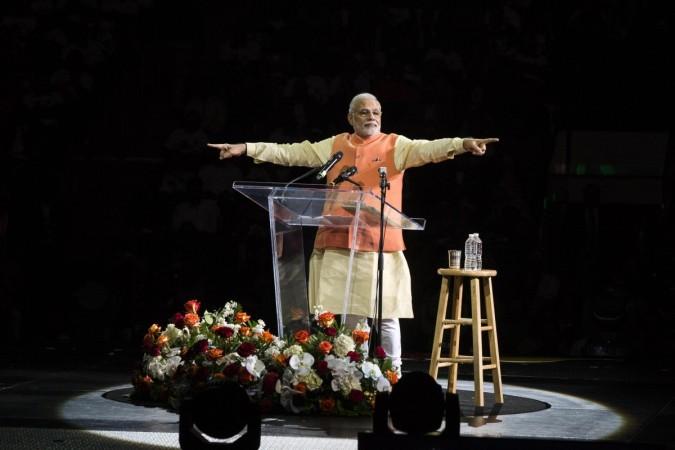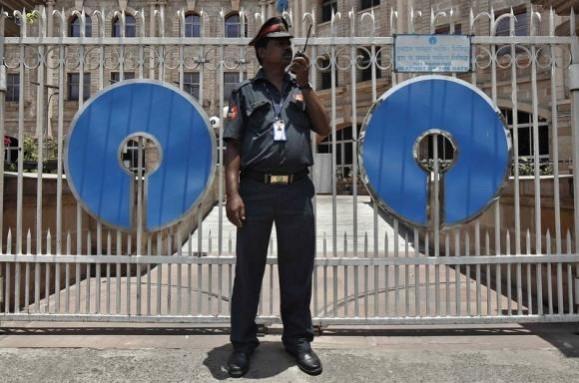
The Narendra Modi government's growth strategy for fiscal 2015-16 is three-pronged – increase in public investment, easing fiscal roadmap and higher revenue generation from oil, spectrum and disinvestment.
Sources believe that the government is building a war-chest of about ₹1,00,000 to ₹1,50,000 crore, as additional budgetary resources, aimed at infrastructure spending.
Additional financial resources would enable the government to embark on massive public investment and also offer tax concessions to individuals and corporates.
Mid-Year Economic Analysis
The Mid-Year Economic Analysis of the finance ministry issued in December 2014 stressed on the need for improved public investment and ensure revival of the private sector. Chief Economic Advisor Arvind Subramanian oversaw the study, which found India's growth issues to be affected by "excessive private sector debt," choking possible investment. The study called for public investment to pick up the slack.
Balance-sheet Syndrome
Making comparisons to Japan and America, the study characterised India to be afflicted by a "balance-sheet syndrome with Indian characteristics."
Japan's real estate and equity boom of the late 80s and the US financial crisis, are examples of overextended balance sheets. In Japan, the debt involved corporate' balance sheets, featuring excessive liabilities, while in the US, it was consumer debt fuelling the 2008 financial crisis.
India, like Japan, is sitting on a pile of corporate debt, constraining investment.
It is in this scenario that public spending is to be understood as a key to generating future growth, not as a replacement to the private sector, but to help with revival and to complement it, read the study.
Fiscal Deficit
It is possible that the government may try and tweak the fiscal deficit milestone, or may leave it unstated, while it tries to revive growth. Under the Fiscal Responsibility and Budget Management Act, the government is to cut its fiscal deficit by 0.3% annually and by 0.5% for the revenue deficit.
If the 2015-16 fiscal deficit is held at 4%, the government could mop up ₹30,000 crore in additional revenues, with the economy clocking 6% growth and inflation remaining stable at 4%, read Firstpost.
If inflation is higher, the nominal GDP would rise proportionately and therefore resources available would also be higher.
Revenue Avenues
Since October 2014, the government has increased excise duties thrice; on Thursday, duties rose up ₹2 per litre on unbranded petrol and diesel.
Revenue through the three hikes for the branded and unbranded fuel is expected be about ₹54,000 to ₹58,000 crore, in a full year.
For the current fiscal, the government is expected to benefit by about ₹16,000 to ₹17,000 crore.
However, next year, would see duties bring in ₹54,000 crore, if oil prices continue to remain depressed.
For the current year, excise duty income would help Arun Jaitley meet his 4.1% fiscal deficit target, while next year, the bonanza could help fund a road-building programme.
Railways Initiative
The Railways Ministry under Suresh Prabhu would see the Railways make inroads into uncharted territory, as it tries to improve its revenues. Part of the plan centers on raising non-tariff revenues. While a marginal hike in fare or freight could not be ruled out, a committee has been formed to look into all possible avenues to generate investments.
The railway committee headed by former finance secretary DK Mittal, has recommend corporate branding for trains and stations, for a fee. The plan envisages bringing India Inc. on board the railway infrastructure with trains and stations that would enable firms to enhance their brand equity.
The financial benefit through the measure could generate as much as ₹8,000 crore in revenues. Conservative estimates suggests ₹3,000 crore in revenues for the first year.
Bank Recapitalization
The government in December 2014 allowed public sector banks (PSBs) to firm up plans for stake dilution. The scheme would see the government ownership come down to 52%. The stock sale is expected to raise ₹1,60,000 crore, sufficient for PSBs to satisfy Basel III capital norms.

The move would liberate the government from its annual recapitalisation obligations.
On an average, the government budgets around ₹10,000 to ₹11,000 crore annually, which can now be used for public investment purposes.
Bank recapitalisation is of fundamental importance, as PSBs fund the additional spending requirements for public and private sector investments.
Spectrum Sale
The Telecom Regulatory Authority of India (TRAI) has proposed pan-India 3G spectrum sale prices to be set at a 22% discount to the base price, to help bidding become more competitive. Spectrum bandwidth increase is also part of the proposal to avoid excess bidding.
Estimates suggest that the government could realise about ₹1,20,000 crore through the auction, with a third of it realizing in 2015-16.
Stake Dilution
The government is keen to divest its holdings in certain key assets to raise funds that could be used for taming the fiscal deficit and improve investment. Stake sale in ONGC and Coal India would net the government about ₹50,000 to ₹58,000 crore for the year.
Specified Undertaking of The Unit Trust of India (SUUTI) holdings in L&T, Axis Bank and ITC, worth about ₹50,000 crore could also be divested.
Bharat Aluminium Company Ltd. (BALCO) and Hindustan Zinc divestment could bring in an additional ₹20,000 crore.
A public infrastructure fund worth ₹1,00,000 crore would be a significant boost to the economy. These measures would have a tremendous impact on the economy. If the plans materialise, India would be embarking on a voyage that would not only make the economy vibrant, but also have the potential to pull out millions from abject poverty.









